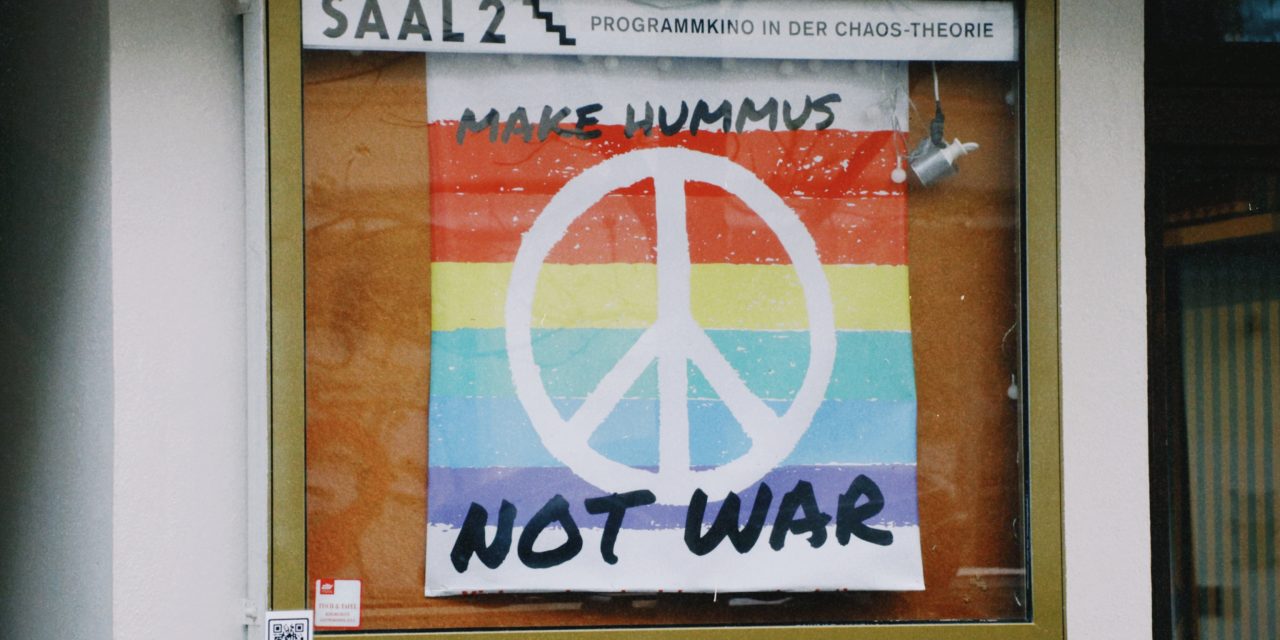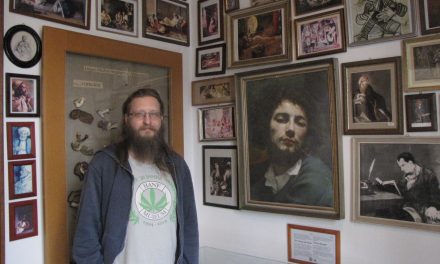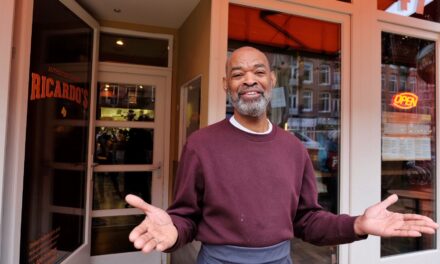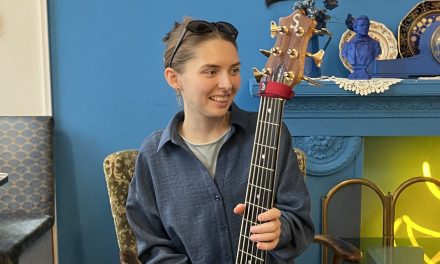Berlin has a rich and complex history with the Jewish community, with Jewish immigrants playing an important role in shaping the city’s cultural and political scene in the early 20th century. Despite facing discrimination and persecution, these immigrants made significant contributions to Berlin’s vibrant cultural landscape, from art and literature to music and theater, like the restaurant Kanaan.
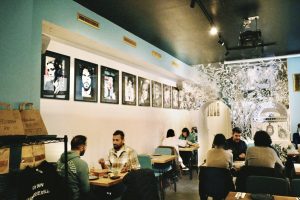

Today, Kanaan the restaurant, is carrying on this legacy by combining cuisine and art to promote unity and peace between different cultures and religions. By showcasing the shared humanity and cultural exchange between Israelis and Palestinians through both food and art, Kanaan is bringing together the diverse influences that have helped shape Berlin into the city it is today. The space’s owner, Oz Ben David and Jalil Dabit, guides visitors through the art pieces that adorn the walls, emphasizing the importance of promoting unity through food.
Visual art
One of the artworks showcased in the space is a portrait of Israelis and Palestinians by a German artist, highlighting the shared humanity between these two groups. Another piece, created by a Palestinian artist, features trees made from metal melted from trains used during World War II, representing the impact of war and the power of resilience.
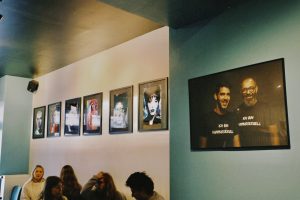
On the left a portrait of the restaurant owners Oz Ben David and Jalil Dabit 
The art space also features a wall sculpture by an Israeli artist that symbolizes both chaos and peace. According to Oz, these pieces aim to challenge people’s assumptions about the conflict between Israelis and Palestinians, and to promote dialogue and understanding between these two cultures.
Kanaan’s commitment to promoting unity and peace is not limited to the visual arts. The restaurant also offers a menu that features a fusion of Israeli and Palestinian cuisine, emphasizing the similarities between these two cultures while celebrating their unique flavors and ingredients.
Food as a cultural bridge
The food is symbolic of the conflict between Israelis and Palestinians, as much of the tension between the two cultures is centered around semantics and a sense of belonging. Oz stresses that the food at Kanaan is a combination of both cultures, not strictly Israeli or Palestinian, and that it represents the shared history and cultural exchange between these two groups.
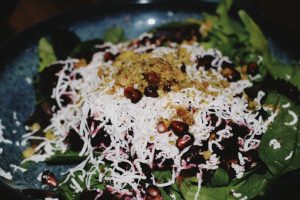
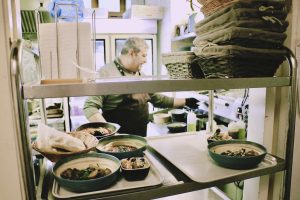
The art and cuisine at Kanaan are not just random choices but are curated with intentionality and thoughtfulness. For example, Kanaan displays a poster originally made by the Nazis in 1938 to promote Palestine to Jewish people. However, the art space commissioned art schools from Israel, Palestine, and Germany to create new versions of the poster that promote Palestine without giving it a Jewish or Palestinian identity.
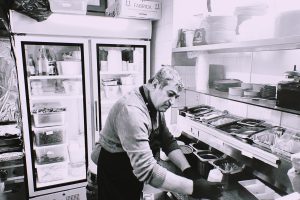
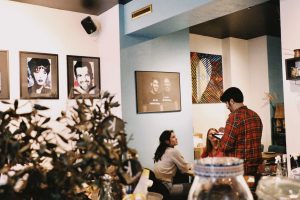
Kanaan’s name is derived from Canaan, a biblical figure considered the father of Christianity, Judaism, and Islam. The name is fitting, as the space is dedicated to promoting unity and peace between people of different cultures and religions.
Jewish complexities
Oz mentions that Jewish people are still faced with complexities of their Jewish identity and the challenges throughout history: “Seventy-five years after the end of the Second World War, I find myself building my future in Germany, falling in love with a German, and getting married. This message is powerful because it shows that even after the darkest of times, there is still hope for a better future. As a Jewish person, finding peace and a safe place in Germany after the Holocaust is a testament to the resilience of the human spirit.”
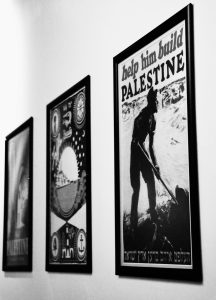
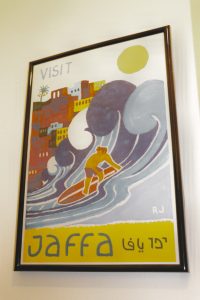
According to historian David Miller, Berlin has a long and complex history with the Jewish community, and the arrival of Jewish immigrants from Palestine in the early 20th century brought new cultural and political ideas that helped to shape the city’s landscape. Despite challenges and tensions, the Jewish immigrants continued to make important contributions to Berlin’s cultural and political scene throughout the 1920s and 1930s.
The history of Jews in Berlin dates back centuries. The city was home to a vibrant Jewish community that played a significant role in shaping the city’s culture and politics. However, the rise of the Nazi regime in the 1930s changed the city’s Jewish community forever. During this time, many Jewish residents were forced to flee the country, and those who remained faced persecution and discrimination.
In the early 20th century, Jewish immigrants from Palestine began to arrive in Berlin, bringing with them new cultural and political ideas. These immigrants were part of a larger wave of Jewish migration from Eastern Europe and the Middle East. They came to Berlin seeking opportunities for education and employment, as well as to escape persecution and economic hardship.
David Miller: “facing discrimination and anti-Semitism, the Jewish immigrants made significant contributions to Berlin’s cultural and political scene. They were instrumental in the development of the city’s vibrant cultural scene, which included art, literature, theater, and music. Many of the city’s most famous cultural institutions were founded or supported by Jewish immigrants, including the Berlin State Opera and the Berlin Philharmonic Orchestra.”
Berlin nowadays
Today, Berlin is once again home to a thriving Jewish community. The city’s complex history with the Jewish community is remembered and commemorated through museums, monuments, and other cultural institutions. The contributions of Jewish immigrants to Berlin’s cultural and political scene in the early 20th century continue to be celebrated and recognized.
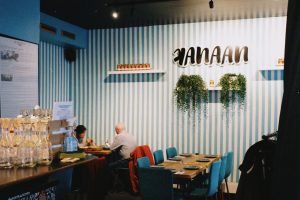
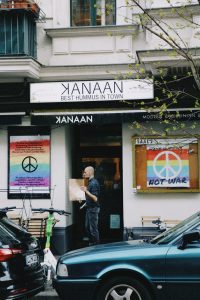
Kanaan continues to carry on this legacy, showcasing the power of art and cuisine to promote unity and peace between people of different cultures and religions. As Oz states, “we want to show that we can live together, eat together, and create together.”
